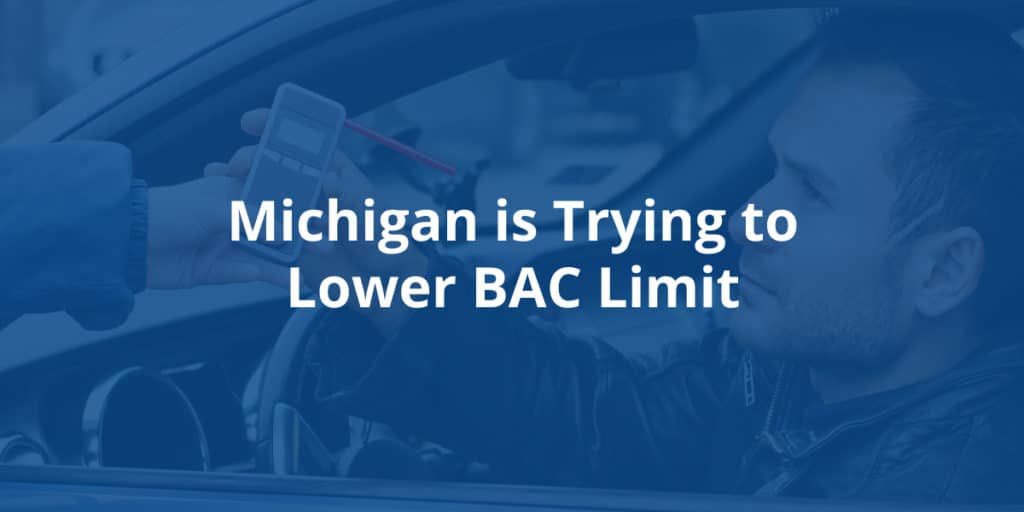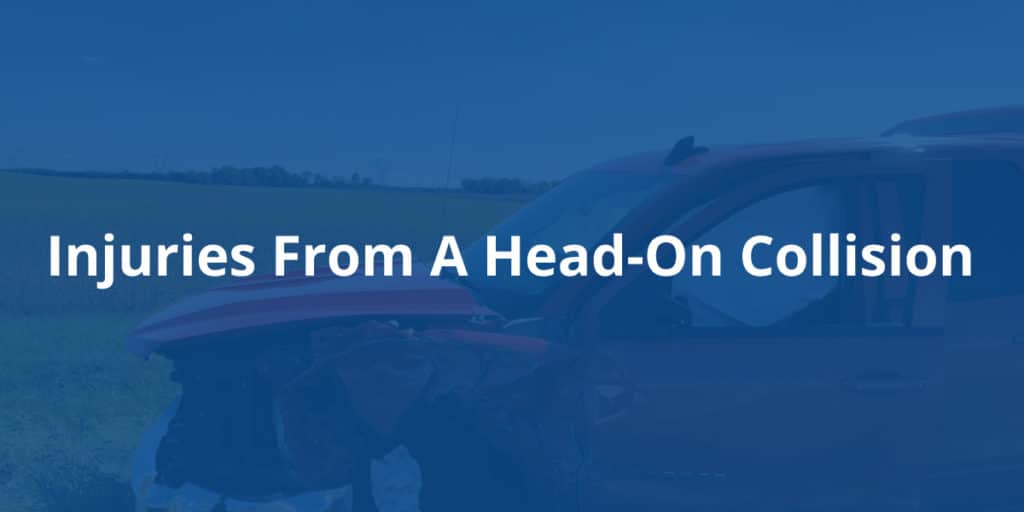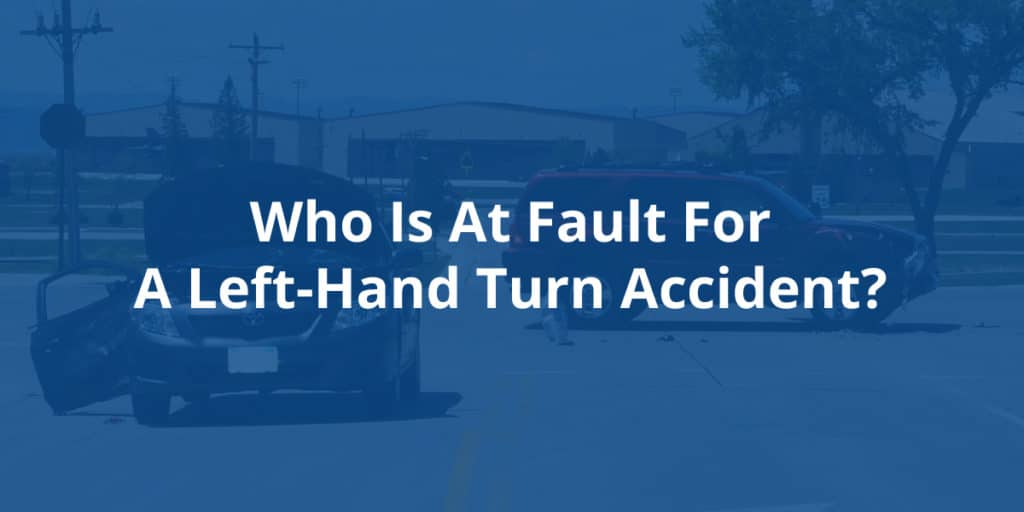









"Thank you so much for all your guidance and support during this difficult period in my life.I Will Never Forget Your Compassionate Professionalism And Unparalleled Legal Expertise." -Zachary P..
"From the 1st meeting, he invested so much time & interest. He was so helpful & reassuring. We won in court." -Ina Lerner.
"They’re the best. You will never lose with them" -Ana Thomas.
"Their services were honest with integrity. I always walked out their office with a smile." -Damilola Adeyale.
"I had a tough case in the beginning but it ended wonderfully and I grossed more than I expected. I recommend each & everyone who has an accident or any other legal matters, to please call Duboff & Assoc." -Terrence Edwards.
"The service was great and very understanding and straight forward all the way to the end." -Kevin Hines.
"I had a great experience working with Duboff & Associates through my legal case. I was involved in a car accident by a tuck tractor at no fault of mine. Mr. Duboff was such pleasant person that he guided me through the process and through by medical care." -Mohamed A..
"We are most grateful to you personally as well as your entire staff at DuBoff & Associates. Had it not been for your legal expertise, our opponents would have prevailed. The series of meetings we had–especially on Sundays to accommodate our individual schedules and our witnesses–deserve special mention." -Isaac Vodi, Riteway Driving School.
"I will not hesitate to refer them to my friends and I have done it before. Again I am very pleased for the good service they provided me. I will always come back for future incident." -Read the full testimonial.
"You have been great to work with, you are a top notch attorney in my opinion. This is my first experience and hopefully my last but I appreciate your openness, patience, and honesty in guiding me through the process. You always made me feel you were working on my behalf to get the best settlement possible." -Larry McClain.

Riding bicycles is always a fun way to get exercise, not to mention it’s great for the environment when you bike as your way of commuting to and from work. Unfortunately, biking can also pretty dangerous no matter where you are throughout the state of Maryland.
That’s exactly why bicyclists and vehicle drivers must work together in order to keep Maryland’s roads safer. It’s important to first and foremost distinguish that bikes are considered vehicles in Maryland, so bicyclists must adhere to the same amount of care and attention as motor vehicle operators. On the other hand, motorists must also give cyclists the same amount of respect that they would provide to another vehicle.
It’s a distinct rule that motorists should provide at least three feet of space between cyclists when passing. Motorists can also do their due diligence in terms of keeping the roads safer by stopping for cyclists at crosswalks and always being prepared for when they may make turns. Bicyclists should also always wear a proper helmet, be as visible as possible, and be aware of their surroundings to do their due diligence towards safer roads.
At DuBoff & Associates, our highly experienced team of bicycle accident specialists is here to help you through these tricky legal scenarios. In this article we are going to go over Maryland’s bicycle laws so you can be more cognizant towards the rules of the road that everyone must obey when riding a bike.
By Maryland law, bicyclists are legally authorized users of every roadway, and bicyclists have the same rights-of-way and general duty to obey traffic signals as all motorists. But of course, bicycles are much less visible than cars, they’re quiet, and they don’t have any type of protective barrier to support a cyclist in the case of an accident, which is why all motorists must drive carefully around cyclists.
As we mentioned above, bicyclists in Maryland in general must adhere to the same rights and duties as motor vehicle drivers.
It’s crucial to know your legal rights and obligations while cycling throughout Maryland. The following is a list of laws you should always keep in mind while riding your bike:
Helmets are required for all bike operators and passengers under 16-years-old.
Maryland’s general DUI statute is the same as it applies to those riding bicycles.
Bicyclists must always ride with the flow of traffic as close as they can to the right side of a roadway.
Cyclists are allowed full lane use within certain situations, including when they are traveling at the same speed as traffic, on a one-way street, passing another motor vehicle or bicycle, preparing to turn, avoiding certain hazards within the road, or biking in a lane that is simply too narrow to share.
There are local ordinances throughout Maryland that may permit bicyclists to ride on sidewalks, but throughout the entire state cyclists must always yield to the right of way of pedestrians while on a sidewalk.
It is illegal for anyone to open a motor vehicle door with the intention of striking or interfering with a bicyclist in any way.
It’s required that cyclists ride in a bike lane when it’s available, but they are allowed to exit the bike lane when they are passing other cyclists, preparing to make a turn or avoiding any kind of hazards on the road.
Bicyclists must always come to full stops at stop signs and must adhere to red lights.
Bicyclists must always utilize hand or arm signals when they are stopping or making a turn, and it’s best to begin making these signals around 100 feet before the turn (if it’s safe to do so).
Motor vehicles must always give a minimum of 3 feet of space when they are passing a bicyclist on the road.
A motor vehicle driver should also always be able to see passed the bicyclist in their rearview mirror before returning to the original lane, and this includes ensuring you are clear of the recently passed bicyclist before conducting any turns.
The general rule is that cyclists must exercise extreme care when passing motor vehicles.
The law here is that bicycles are only allowed to ride next to each other in groups of two, and they generally cannot impede motor vehicle traffic.
The following are some tips to keep in mind while you’re out on the road here in Maryland:
If you or a loved one were injured in a biking accident, then it’s important to retain a Maryland personal injury attorney who can help you better understand your legal rights and get you on the right track towards your rightful compensation. Our team of specialists is always here for you when you need us most, so contact DuBoff & Associates, CHTD to schedule a free consultation with one of our skilled lawyers.

A proposed Michigan bill could lower the official drunk driving level to .05, which would make Michigan one of two states (including Utah) in the country to have a drunk driving threshold below the .08 norm. The legislation introduced in late March by Rep. Abdullah Hammoud, D-Dearborn, has since seen leaping bounds of support throughout the entire state.
“We must address drunk driving, which is a completely avoidable epidemic,” said Rep. Hammoud in a recent news release. “As a former public health professional, I am motivated by facts and statistics, and as a legislator I know our current policies in place to prevent drunk driving aren’t working, which is why we must do more.”
Many other countries around the world have lowered their rates of drunk driving by lowering the legal driving BAC level to .05, and in 2013 the National Transportation Safety Board also suggested that every state lower the legal BAC level to .05. This is partly where Hammoud’s ‘Drink OR Drive’ campaign derived inspiration from to genuinely believe that Michigan constituents will not only pass these bills, but will truly benefit from the switch.
Hammoud has also cited studies that suggest that around 11% of all nationwide drunk driving fatalities (about 1,500 lives) would be saved if the entire country adopted this BAC reduction.
Here in Maryland we have the newly created Noah’s Law, which also strictly enforces DUI penalties and has largely expanded the presence of Maryland’s Ignition Interlock Program. Noah’s Law has been in effect since October 2016, and it largely requires convicted DUI drivers, DWI drivers with child passengers and DUI/DWI drivers who inflicted a life-threatening motor vehicle accident to utilize an ignition interlock device for a specifically mandated period of time.
Maryland’s general crackdown on drunk drivers over the past few years has instituted a significant increase in DUI punishments, but many local legislators throughout Maryland, D.C. and the Greater Virginia Area are currently looking to Michigan’s potential BAC legal limit decrease as an example to potentially follow to further prevent people from considering a drink or two before driving.
Another bill within Rep. Hammoud’s legislation package requires people who are convicted of their first DUI charge to utilize an ignition interlock device in order to continue driving. The main reason why Hammoud introduced this second bill is because of the fact that many people ignore their license suspensions after being convicted of drunk driving, and because studies have suggested it makes people much less likely to reoffend.
Hammoud was also inspired by the deaths of the Abbas family, who were killed by being impacted by a drunk driver going down the opposite direction on I-75 near Lexington, Kentucky.
“These proposals will help change behaviors, and they are backed by the science, and they are backed by the leading experts combating drunk driving across our country,” Hammoud said.
Some of the leading experts Hammoud cited include major groups like:
These groups are part of the team that has estimated an 11% decrease in fatal alcohol crashes across the country, if the entire country jumps on the lower BAC threshold bandwagon.
Helen Witty, the nationwide president for Mothers Against Drunk Driving, is encouraging Michigan and many other states to adopt the .05 change.
“Research shows that critical driving skills are impaired at .05 BAC, significantly increasing the risk of a horrible, 100% preventable crash,” Witty said. “We want to do anything we can to support states that are trying to stop these tragedies and keep drunk drivers off the road.”
As of right now the only sponsors of this stricter DUI bill are Democrats, and it’s still uncertain as to whether or not Republicans nationwide will support these types of measures. The American Beverage Institute has publicly come out against Hammoud’s plan stating that the bills are
“shifting to those who enjoy a drink or two over dinner – a group that is not overrepresented in traffic accidents.”
In order for these proposed bills to become law, they will have to pass the Michigan state House, state Senate and then be signed by Governor Gretchen Whitmer.
The attorneys at DuBoff & Associates have ample experience dealing with victims of drunk driving accidents, so we fully believe that lowering legal BAC levels can potentially have a profound impact in terms of saving lives and keeping drivers safer on the road.
For more information about DUI defense, car accident personal injuries and anything else, feel free to contact us today for a free consultation.

A head-on collision is a type of car accident that occurs when two motor vehicles impact one another with the front ends of each vehicle pointing towards each other, and these types of collisions are considered to be one the deadliest types of roadway accidents.
Head-on collisions will often leave victims severely injured or even dead, and this is typically because these accidents frequently occur when both vehicles are driving at high speeds. It’s said that a head-on collision is similar to driving into a wall with little to no impact absorption.
There’s no denying the severity of pain, both physically and emotionally, that’s involved with head-on collisions; and medical bills will undoubtedly build up as a result of these types of injuries.
In this article we are going to discuss some of the most common injuries that head-on collision accident victims suffer from, and if you or a loved one has been involved in a head-on collision of any magnitude you should contact us immediately so we can help you put the right steps forward towards receiving your rightful compensation.
Some of the most common injuries involved with head-on collisions include the following:
A victim’s head and neck tend to continue to move in the moments of a head-on collision while the person’s body stays predominately in place due to seatbelt usage. This type of sudden jerking of the head and neck can cause the muscles and ligaments in the back and neck to unnaturally stretch, and this can also lead to severe twisting that creates tears and stretches within a person’s muscles, ligaments and tendons.
Whiplash injuries can last anywhere from a month or so to several years, and many whiplash victims develop the following symptoms:
Any type of serious whiplash-related injury requires professional rehabilitation treatment, which is why many whiplash victims go to a local chiropractor for regular realignments and checkups until the pain is fully alleviated.
The discs in a person’s spinal cord can be harshly compressed when the impact of a head-on collision is severe, and this can lead to ruptured or herniated discs and even a permanently damaged vertebra.
There are some instances in which paralysis occurs from this kind of intense spinal cord damage, and the paralysis in general will vary from complete to partial loss of sensation in the legs, torso and all four limbs. The extent of paralysis is a very serious issue with spinal cord injuries like those experienced in head-on collisions, and it primarily depends on the exact location of the spinal cord damage.
There’s no doubt about it that spinal cord injuries are extremely dangerous and require immediate medical assistance, and many times spinal cord injury patients may require full-time treatment for extended periods of time.
There are situations in which a spinal cord injury victim doesn’t ever fully recover, which is why it’s one of the most severe types of head-on collision injuries.
There are situations in which a driver’s head can be swiftly thrown into the steering wheel during head-on collisions, and traumatic brain injuries often result if the impact is intense enough to fracture the victim’s skull.
Skull fractures of any kind can create serious brain damage, and these types of brain injuries can often result in repeated concussions and other serious brain injuries. There are situations in which a head-on collision victim will not fully recover from the brain trauma that was caused by the accident, which is why this type of injury often results in vast settlements and life-long medical treatments.
There are countless situations in which a head-on collision victim suffers bodily injuries from the sheer force involved with the accident, even when the airbags properly deploy and the victim was wearing their seatbelt. One of the most common types of direct trauma injuries involves the chest and upper torso area, and these injuries typically are internal and caused by the airbag deployment or severe restraint from the seatbelt.
These types of chest and upper torso injuries can include damaged lungs, shoulder joint damage and broken ribs. This type of direct trauma also often affects the abdominal area where your kidneys, liver, spleen, diaphragm and much more can be susceptible to serious injuries.
There are some situations in which a head-on collision victim may not fully understand that they’ve suffered an internal injury, which then leads them to put off the necessary doctor visits because they think their pain will simply go away in due time. Putting off a doctor visit while experiencing internal pain can end up being a life-threatening mistake, so we always advise that you seek out immediate medical attention following a head-on collision even if you think your pain is somewhat minor.
The severity of head-on collisions can be enough to crush a driver or passenger’s facial and inner bone structure, even when airbags properly deploy. These types of facial wounds are very common and tend to lead to chin, eye socket, cheek and jawbone irregularities.
Many times plastic surgery is necessary for these types of facial bone injuries, and there are rare instances in which victims will be left with some kind of scarring that requires more cosmetic treatments to eventually mask.
Lower extremity injuries are also very common with head-on collisions, and this is because the feet and legs are often the parts of the body that absorb a lot of the initial impact.
Some of the common lower extremity injuries involved with head-on collisions include a torn ACL, crushed legs, ankle and foot injuries, broken bones and much more.
Immediate medical attention always comes first in these types of drastic situations, but reaching out to one of our Silver Spring, Bowie, College Park, Landover and Upper Marlboro Injury & Accident Attorneys is also one of the first checks to take off your list of post-accident necessities.
We’ve helped our past clients receive their rightful compensation after suffering physical, mental and emotional injuries due to a negligent driver causing an accident, and we’re more than confident we can support you and your case by ensuring that you don’t need to worry about how your medical bills are paid and simultaneously devising our plans for legal action.
No matter how serious you or your loved one’s head-on collision ended up being, always feel free to contact us for a free consultation so we can begin taking the necessary steps towards obtaining your rightful compensation.

There are always many factors that come into play in terms of determining who’s at fault in a car accident, and when it comes to left-hand turn accidents there tends to be a false assumption that the driver conducting the left-hand turn is always at fault.
Of course this isn’t always the case because all circumstances are different, but there still is a predominant legal misconception within these scenarios because left-hand turns typically require drivers to yield the right of way. It’s always perfectly reasonable to expect drivers making left-hand turns to yield to oncoming traffic, but the liability within some of these types of accidents is sometimes more difficult to determine than most would initially think.
We are proud to support our clients through these confusing personal injury cases, and we fully understand how difficult it can be to prove that the other driver not making a left turn was at fault in these types of scenarios. So what we’ve done in this article is provide you with everything you need to know in terms of determining fault if you find yourself involved in a left-hand turn accident by making the turn or driving straight.
As always, if you have any questions for us don’t hesitate to contact us for a free consultation so we can better understand your case and start making the initial steps towards legal action.
The driver who is trying to make a left-hand turn must always yield to other vehicles, unless the left-turning vehicle has the right of way (green arrow). For the most part, drivers must always properly wait to make left turns until there is no oncoming traffic, or the traffic is at least a safe distance away to allow for the left turn.
It’s also very important for left-turn drivers to remember that they must always wait for cyclists and pedestrians to cross a street or crosswalk safely, but there are some liability differences when a cyclist or pedestrian illegally enters a crosswalk and the driver doesn’t have enough time to stop.
It’s never legal for a left-hand turning driver to cut off oncoming traffic, and this is always a very risky maneuver that does many times lead to collisions. There are many left-hand turn accidents that occur in places where a stoplight isn’t present, and in these places it’s always the responsibility of the left-turning driver to take the necessary precautions before initiating the turn. The oncoming traffic always has the right of way in these situations, which is why left-turning drivers are often initially deemed at fault for these types of accidents.
There are instances in which the left-turning driver isn’t liable for the accident’s occurrence, and this typically is when the driver making the left turn has the right of way. Some examples of this can be when a green left turn arrow is provided, or when a driver runs a red light and impacts the car making the left turn.
Other drivers besides the left-turning driver may be liable for the accident if they are found to be rolling through stop signs, texting and driving, or any other kind of distracted driving. But in legal terms, the liability of these types of accidents will come down to the right of way, each driver’s duties on the road, and what a reasonable and prudent driver would have done in the same type of scenario.
There are also liability situations in which the other driver not making the turn simply was acting negligently or driving recklessly. An example of this would be if the other driver was speeding well over the speed limit and made it difficult for the left-turning driver to gauge the safety of their impending turn.
Unexpected circumstances are always at play when it comes to causing left-turning drivers to swerve or come to a stop while executing their turn, and in certain situations these third parties can be found liable for the accident’s occurrence.
If the other driver going straight was intoxicated or negligent in any way then this could also be a factor in determining at least partial fault for the accident.
No matter which side of the table you’re on in these scenarios, it’s crucial for everyone to know how to prove fault within left-turn accident lawsuits. This can include physical evidence like the debris that’s left on the road after the accident, the resting positions of each vehicle after the crash, and any kind of camera footage that may be helpful in determining the liability of what happened. There’s no doubt about it that collecting this type of evidence is somewhat difficult, especially in more rural areas where traffic cameras aren’t available.
Once any kind of left-hand turn accident occurs, it’s always important to call the police immediately and have them come conduct an official accident report. If you’re capable of doing so, it’s also a good idea to take pictures of the accident scene and your injuries as soon as possible. The timeliness of these pictures is crucial because the police may be required to move the crashed vehicles out of the street, which could potentially destroy valuable evidence that would help your case.
No matter what, you should always reach out to one of our attorneys as soon as possible when you’re involved in a left-hand turn accident. By going through our free consultation process we’ll be able to help determine your best course of legal action and begin building a strategy that will help you prove that the other driver was at fault for the damages done to you and your passengers.

If you or a loved one has suffered some kind of significant harm in an accident that involved someone else’s obvious negligence, then it might not be so difficult to answer this article’s question. However, as we all know very well. there are many situations in which deciphering the validity of a personal injury case isn’t so easy.
If you’re in the process of trying to figure out if you have a serious personal injury case that justifies going through insurance claim filing and a potential civil court lawsuit, then there are many factors that you should keep in mind while going about your initial legal strategy decisions.
In this article we’ll go over the fundamentals of what coincides with a personal injury lawsuit, the four requirements for a valid personal injury case, other factors that strengthen these types of lawsuits, and the reasons why your personal injury case may potentially fail.
Everything in this article is crucial to take into consideration as you are figuring out what you can do about a specific injury/accident that occurred, and our team of attorneys is always here to assist you through all the hoops and bounds associated with personal injury law.
When you file a personal injury claim, you are essentially going through the legal process of enforcing you and your loved ones’ rights towards receiving your rightful compensation for any monetary damages a specific injury may have caused you.
In most situations, you’ll be seeking your rightful compensation from the insurance company of the responsible party in your personal injury case, and this is because most people have insurance policies that protect them for these exact types of scenarios. Some of the more common personal injury claims include the following:
There are many different types of injuries that can take place within a personal injury case, and this also includes a lot of different types of compensation to cover your losses. Some of the common types of re-compensation in personal injury law go towards:
In order to know if you truly have a personal injury case, you’ll need to examine the overall strength of your case, including your general rights to recover the types of compensation we listed above. It’s crucial to be able to undoubtedly prove the essential elements that are involved with every personal injury case, which usually will require the use of verified evidence and testimonies to establish the following four requirements:
These other two factors may not be considered part of the four essential elements of a personal injury claim, but they still are serious factors that you should be aware of when it comes to your overall chances of success. These factors include:
Every state is going to have different restrictions in terms of the amount of time you have to file a lawsuit in court after the date of the accident. If you do not initiate your personal injury case prior to your state’s deadline, then you are not eligible to recover compensation.
This law will generally affect the overall amount of monetary damages you’ll be able to receive within your personal injury case. This rule will ultimately focus on your own conduct and whether your actions played a role in contributing to your injuries. This essentially means that if you had any partial fault for creating the injury-inducing situation, then your compensation will be reduced by the percentage of fault a judge will attach to your actions.
Maryland, DC and the Greater Virginia Area just so happen to be three of a handful of jurisdictions that uphold contributory negligence laws, which essentially state that a personal injury victim forfeits their rights to compensation if they are found to be partially at fault for an accident’s occurrence. So what’s important to know here is that an insurance company representing an at-fault driver/individual can attempt to prove how a plaintiff in a personal injury case was in any way responsible for an accident, and essentially nullify your rights to compensation.
There have been several proposed changes to this law in Maryland to more lenient comparative negligence rules, but with contributory negligence currently remaining prevalent it becomes even more crucial to utilize the counsel of expert personal injury attorneys to help you prove that the at-fault driver was completely responsible for the accident.
It’s important to measure the overall strength of personal injury cases by also assessing the potential weaknesses that may be involved. There are several different types of flaws that can assist insurance companies in denying your injury claim.
So, you may be putting your case and yourself at a disadvantage if you:
If you or a loved one were hurt in an accident and you want to know more about the overall strength of your case then always feel free to contact us online. We’ll be able to set you up with a free consultation with one of our experts, answer your questions, and begin the foundation of your legal strategy.